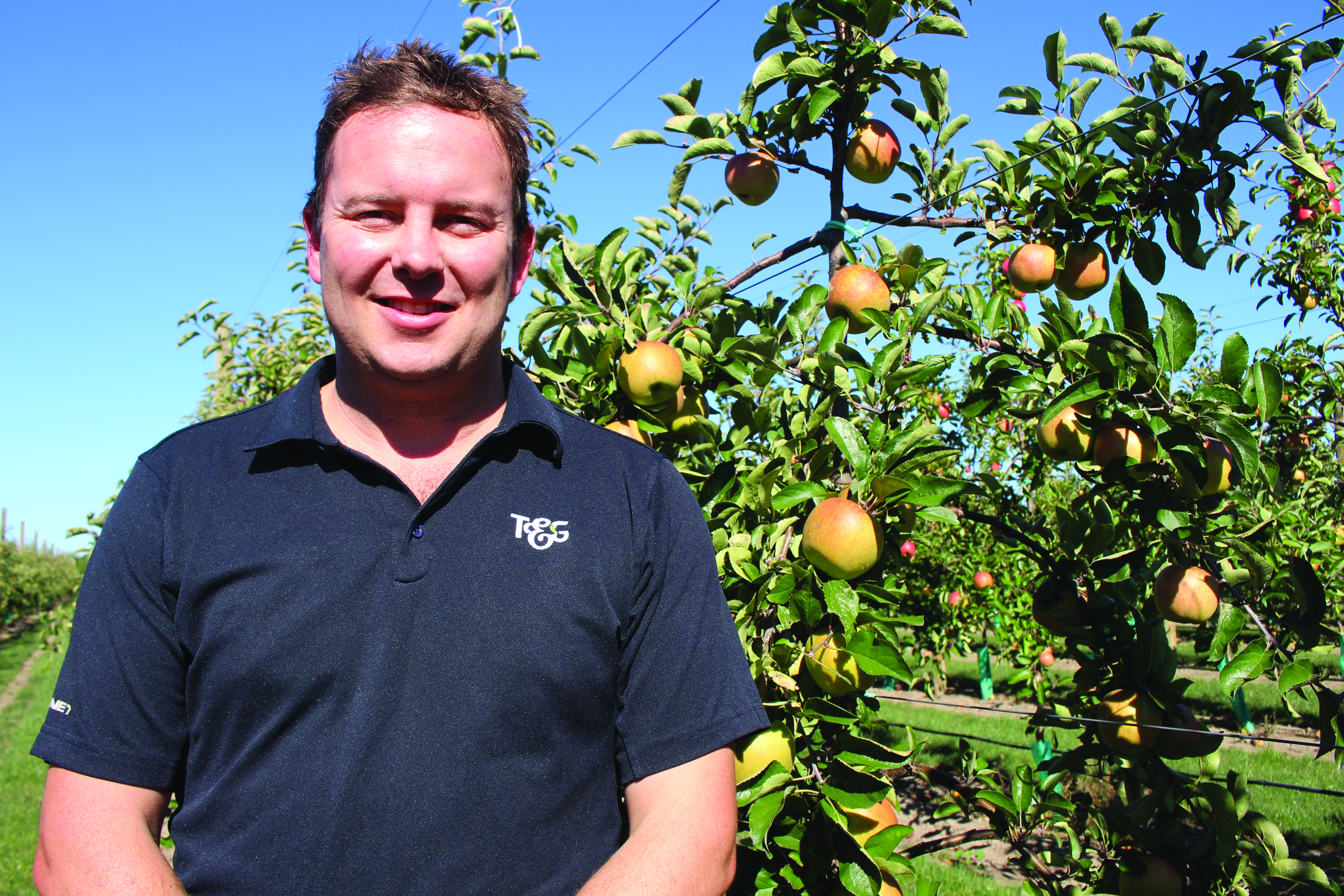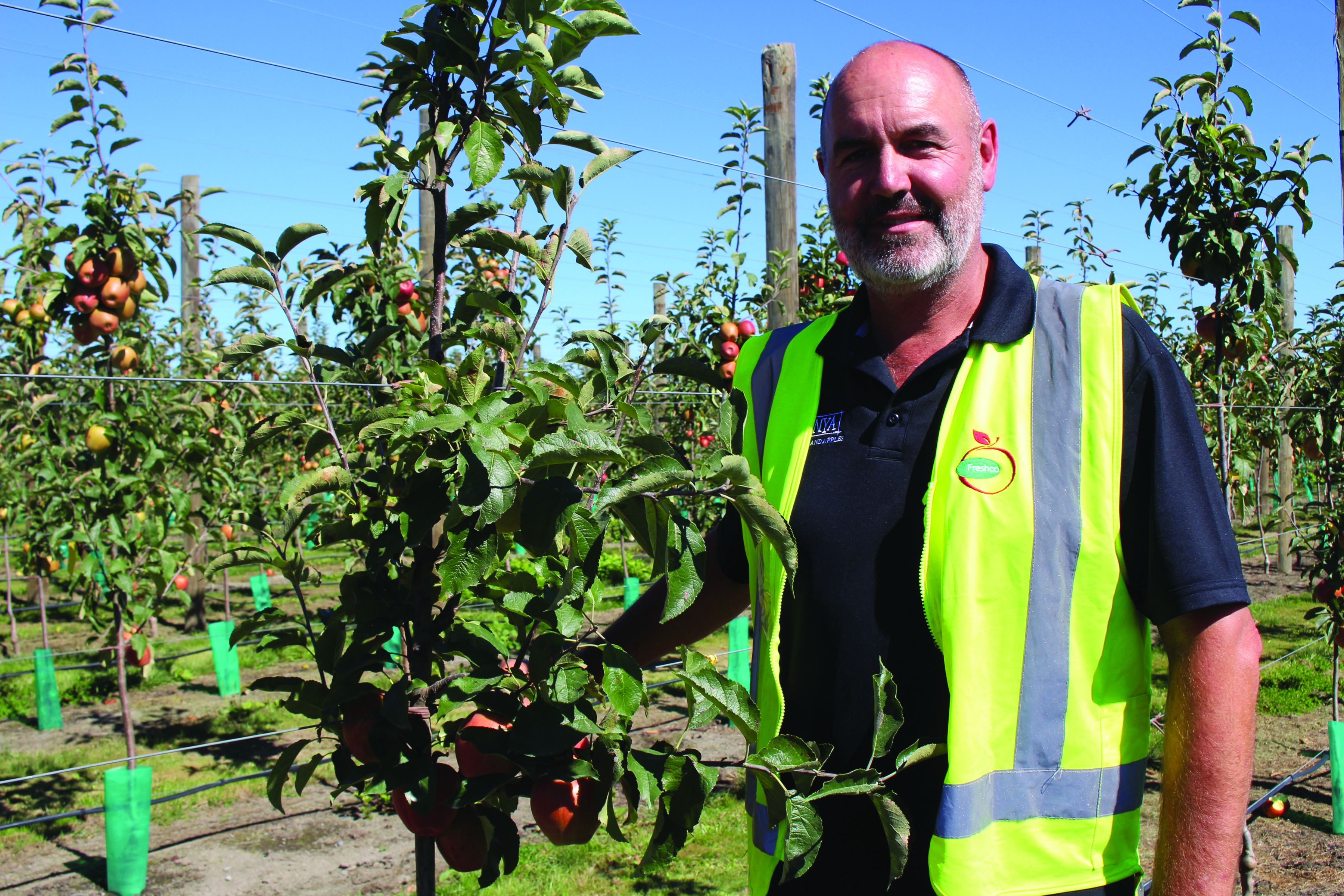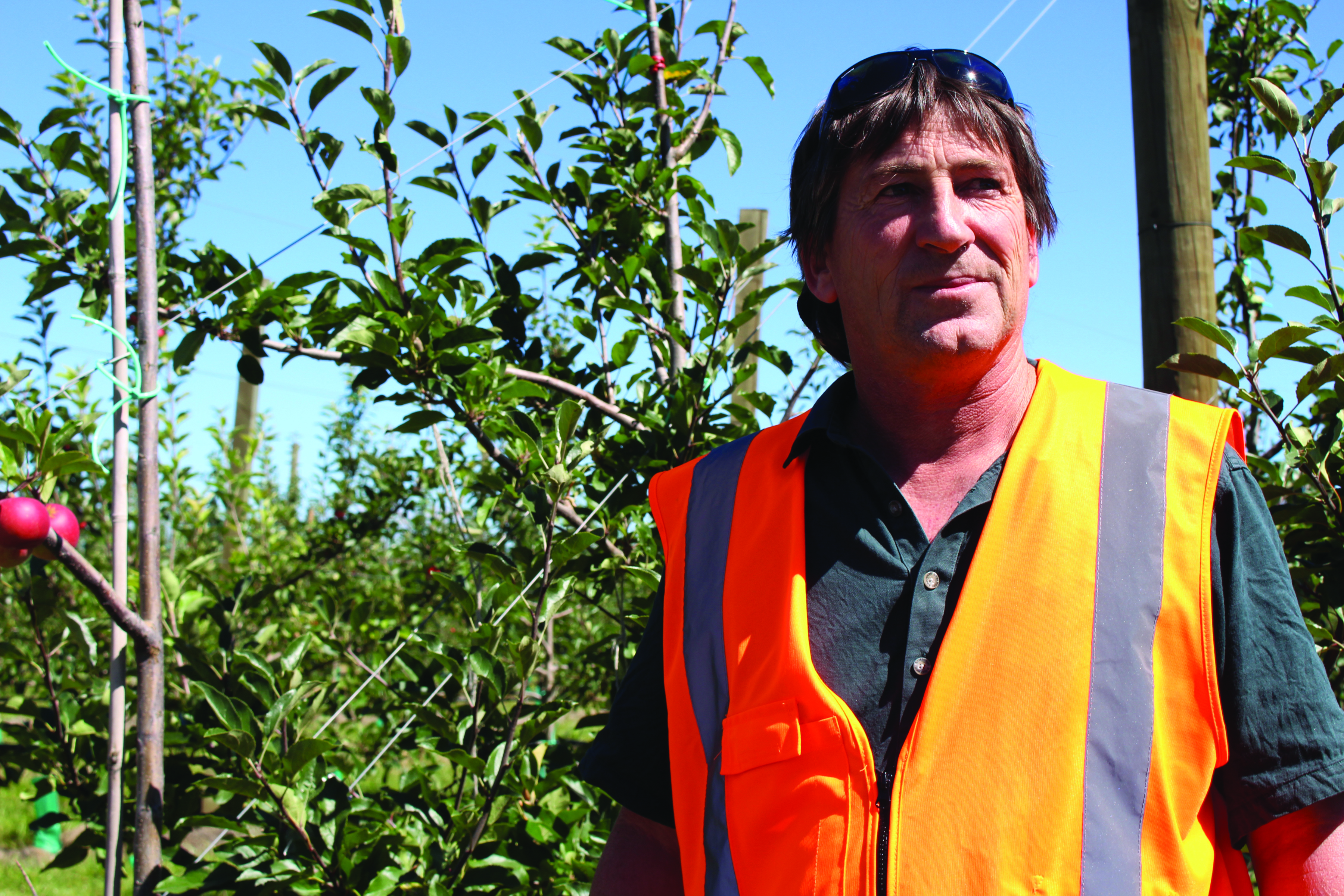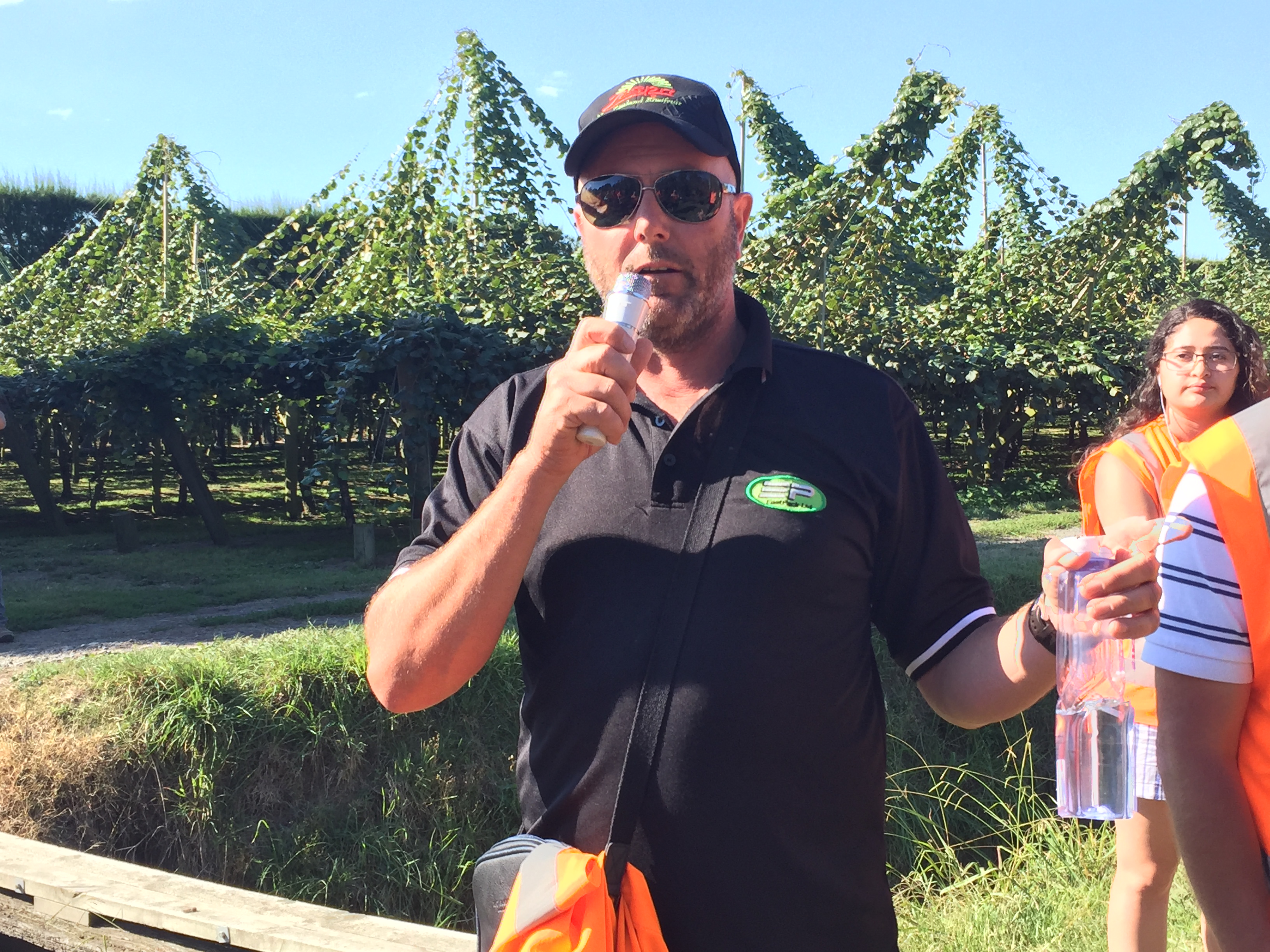

May 3, 2018IFTA study tour highlights New Zealand growers
New Zealand growers and industry representatives showcased the country’s tree fruit production amenities during the International Fruit Tree Association’s 2018 Study Tour and Conference in February.
Tour participants witnessed early apple harvests in the Hawke’s Bay, Timaru and Nelson regions. Visited on the South and North Islands were a mix of orchard operations that exemplify the New Zealand industry in terms of operation size, management practices, adoption of technology, tree age, and variety mix.
Presentations focused on production efficiencies, orchard systems, varieties and available technologies including platforms, harvest assist, record-keeping systems and cropload mapping.
Some of the tour stops included the following:
Prevar Limited
CEO Brett Ennis led a tour of the business established to globally commercialize the new apple and pear cultivars bred in New Zealand by Plant and Food Research (PFR) in a manner that assists Australian and New Zealand growers to achieve sustainable profits from the new cultivars.
Complimentary Northern Hemisphere commercialization is part of the strategy to provide market demand, achieve critical mass and brand investment. Prevar exclusively contracts with PVR to undertake the apple and pear breeding with Prevar determining the cultivar branding themes.
Prevar is a joint venture company with three shareholders: APAL Apple and Pear Australia, Pipfruit New Zealand and PFR.
The tour stop focused on the new varieties, breeding process, cultivar and brand development, and licensing.
Apple varieties include Piqa Brand Fruits, Piqa Boo and Reddy Robin. Apple varieties feature Smitten, Rockit, Lemonade, Sweetie, Dazzle and Cherish.
Johnny Appleseed – Pakowhai Orchard
The Paynter family started growing apples and stonefruit in 1862 out of Stoke, Nelson. In the early 1900s, the Paynters moved their growing business to Hawke’s Bay. Five generations later, the Paynters are still growing apples and stonefruit on the family orchards in Havelock North, Hawke’s Bay.
Long-time IFTA members John (former IFTA Grower of the Year), son Paul (pictured above) and their family hosted the visit that included lunch and a look at the operation’s harvest and production equipment.
The stop focused on mechanization with a spotlight on mechanical hedging and sprayer technology.
The Rockit
At the Rockit apple stop, tour-goers viewed the miniature apple that had a worldwide launch in 2010 from Hawke’s Bay. Rockit apples are sweet, crunchy and “distinctively fresh.” The fruit, which naturally grows small and features a red blush color, originated by crossing Gala and Gala Splendor.
The stop focused on the unique aspect of the Rockit apple, including harvest, specialized packing facilities, specialized containers and snack market penetration, particularly in Asian regions.
Orchard operations manager Ben James oversaw the orchard visit with fruit at or near harvest.
Postharvest manager Andrew Mason, Rockit Global Limited, gave an overview of the operation’s packing shed shop.


T&G Global – Evanden Road Orchard
T&G Global (originally Turners and Growers) began in Auckland, New Zealand as a fruit auction business in 1897.
EnzaFruit Products is the U.S. subsidiary for T&G Global. T&G is a BayWa company.
T&G Global employs approximately 1,500 permanent and 2,500 seasonal workers. It has more than 17 offices in 12 countries. Its customer base is in more than 60 countries.
The tour stop focused on orchard systems, including a FOPS trial, production economics, Envy and Jazz varieties.
Morgan Rogers, head of quality and innovation for pipfruit /T&G, said the company is the largest domestic operation for fruit in New Zealand. When the industry was deregulated in 2000, Turners and Growers acquired the then-disbanded apple and pear marketing board’s business of Enza, the branded pipfruit company.
Rogers said 79 percent of the business is German-owned and 19 percent is a partnership with the largest Chinese fresh fruit distributor, called BIVA Organic.
“That’s given us the horsepower to be where we are today,” Rogers said. “We’re a global business. At this stage we have developments in table grapes in Peru, asparagus partnerships in Australia and we’re active in 23 countries with sales and marketing. We’re growing pipfruit in 13 countries, with rigorous testing in four others for future commercialization.”
Rogers said “60-70 percent of revenue in this business comes in pipfruit, so it’s a very important part of our business.”
New Zealand represents 30 percent of the pipfruit industry’s exports.
“Globally, we’re currently marketing around 10 million cartons,” Rogers said. “Our growth plans are focused primarily on the Jazz, Envy and Pacific Rose brands and plantings. We have a growth target that is expected to hit over 20 million cartons by 2020. We’re rescheduling our plans to build a consumer-focused 2025 target, also.”
Currently, T&G is looking at 60 percent New Zealand production, 40 percent offshore production, and “in the next few years we’ll be looking to be more global production as opposed to just New Zealand production – so we truly are global.”
“Our focus is to bring profitability to every stakeholder in the program, and without our growers we wouldn’t be here today, so the focus is to give the consumer what they want every time they eat our product, and bring it back to the growers,” Rogers said.
At a T&G commercial research plot, orchard manager John Dine described a block of Jazz, Envy and Galaxy on slender spindle – the same on a FOP system, and Envy and Jazz on a v-trellis.
The principle of the orchard systems project is the operators have kept all of the costs to date of the establishment of it, and it’s large enough to be able to get a measure of production data from it for a number of years.
The orchardists will keep a close watch on these systems on what the costs and outputs are.
Currently all on the second leaf, for the slender spindle, the company is looking at 70 to 90 tons – maybe 100 tons. For the V-trellis they’re be hoping for 120-130 tons, and the researchers believe the FOPS system will be good for 150-190 tons.
Freshco – Tyford Orchard


Host Greig Taylor told of how Freshco was founded in 1989, as an Auckland-based export business. The operation has steadily grown to include orchards, packing houses, cold storage and offices in key growing locations through New Zealand.
Apple varieties include the standards plus Breeze, Sonya, Cheekie, Royal Joburn, New Zealand Beauty, New Zealand Queen and New Zealand Rose.
Taylor showcased the orchard’s intensive organic apple production.
“We’re trying to grow a super spindle, with trees clipped to wire as they grow,” Taylor said. “They will be clipped at the top – the tree will do all of the work. It’s very easy to teach the staff how to train the trees. The intention is that we have a spindle all the way to the top, fruiting on the stem wood itself. When we take limbs off, we’re leaving a small stub and seeking to get fruiting sites set up there. We don’t want to be tying any of this down or growing anything out into the row.
“Every orchard planted in this block is pretty much on M.9 rootstock,” Taylor said. “There is a block of a Galaxy Royal Gala strain on a CG.202 rootstock, which is slightly stronger.”
Bostock New Zealand


Continuing the theme of intensive organic apple production, Bostock New Zealand is the first commercial and largest organic apple producer in New Zealand and has been growing premium organic apples since 1996.
Bostock has 1,200 acres of BioGrow-certified land and is responsible for marketing and exporting 85 percent of New Zealand’s organic apple crop to the world. Bostock also produces and sells apples grown in conventional production systems.
Along with standard apple varieties, recently planted selections include N Z Prince (Kingsbeer Red), Posy (TCLC), TCL40, Opal and Premier Star.
BioGrow NZ, which is accredited with the International Federation of Organic Agriculture Movement, aims to improve long-term soil structure and fertility, encourage biological cycles, maintain genetic diversity, avoid pollution, and cycle organic matter and nutrients within the production system.
Mr. Apple – Close Orchard
Chief Operating Officer Richard Hill led an overview of Mr. Apple’s operations that include 15 orchards in and around Hastings, Napier and central Hawke’s Bay. Mr. Apple employs more than 2,200 people – 340 full time and up to 1,600 seasonal workers.
In addition to standard varieties, Mr. Apple produces and sells Early Queen, NZ Beauty, NZ Queen, NZ Rose, Diva, Posy, NZ Prince and Smitten.
The stop focused on applications of the Billy monitoring system, a proprietary intensive orchard management system on older orchards with Fruitcraft’s new varieties.
Waima Fruit


Mark Erickson oversees the fourth-generation family-owned and operated fruit production business he runs with his wife Leah in partnership with Mark’s parents, Peter and Lesley Erickson.
Mark is director of Waima and the operations manager, running the family business in conjunction with his wife, who manages and controls administration, regulation, compliance and all the financial aspects. They are assisted by Mark’s father, Peter.
Waima grows seven varieties of apples on 45 acres: Pacific Beauty, Pacific Queen, Pacific Rose, High-Colored Fuji, Galaxy (Royal Gala) and Braeburn, including Aurora and Jazz.
Each block on each of Waima’s three orchards is grown to meet market demands and expectations, hence size is variety dependent, whereas color, taste and crunch are required on all blocks.
Waima Fruit also produces Zespri “Green” and “Gold” kiwifruit.
In 2006, Waima Fruit was awarded World Fruit Grower of the Year by World Fruit Journal and The Grower. The award portrayed the Waima team’s approach to producing high quality, sustainable produce.
The stop focused on precision execution in apple production and it was the only tour visit where tour-goers entered a Kiwi block. The tour was limited to entering only one kiwi block to curtail the spread of Psa (Pseudomonas syringae pv. Actinidiae) around the country.
See more stops from the IFTA New Zealand Study Tour: New Zealand tweaks approaches, spurs growth
– Gary Pullano, FGN Managing Editor; All photos: Gary Pullano














